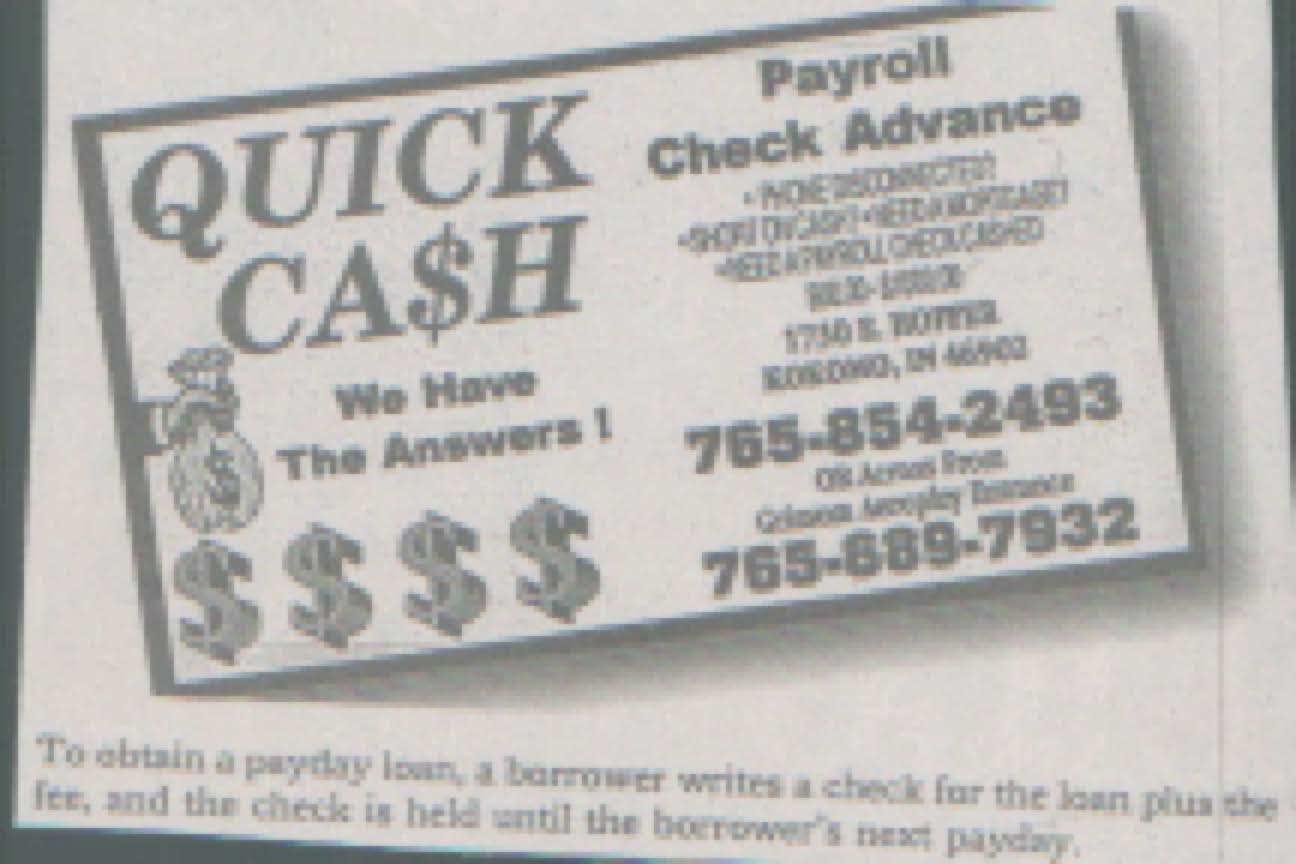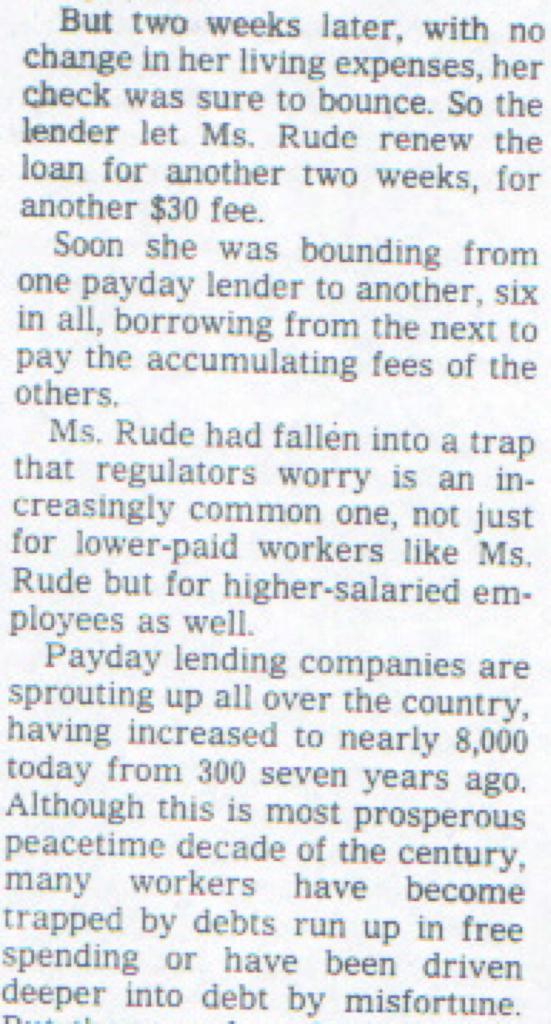Question
Carefully read the following passages from The New York Times and answer the questions below. A) What annual rate of return was the loan company
Carefully read the following passages from The New York Times and answer the questions below.


A) What annual rate of return was the loan company charging Ms. Rude if she repaid the loan on the next payday? (Assume she gets the loan on the first payday, time 0, and that each payperiod is two weeks. A year is 52 weeks).

b) In answering this question, assume that Ms. Rude borrowed from only one lender (instead of six) and paid $30 each pay-period to renew the loan. What annual rate did Ms. Rude end up paying if she repaid the loan on the seventh payday?
c) A credit card available to people with poor credit might have a 3 percent fee for a cash advance plus an annual interest rate of 19.8 percent. If Ms. Rude had access to such a credit card, what would she pay to borrow $100 for one pay- period (i.e., two weeks)?
KOKOMO, Ind., June 16A year and a half ago, Doris Rude, a taxi driver who is partly disabled by a herniated disc, was living at the edge of her income of $300a week and had just $5 in the bank. Then she received a $1,900 hospital bill. With poor credit and no money, she turned in desperation to a new, fast-growing American institution: The payday loan company. For a fee of $30, the company agreed to advance her a two-week loan of $100. To obtain the loan, she wrote the company a check for $130 that the lender agreed to hold until her next payday. With "Io ebiain a paydlyy loan, a barmower writes a check for the laun plua the fer, and the check is hekd entil the bocrower's next payday. But two weeks later, with no change in her living expenses, her check was sure to bounce. So the lender let Ms. Rude renew the loan for another two weeks, for another $30 fee. Soon she was bounding from one payday lender to another, six in all, borrowing from the next to pay the accumulating fees of the others. Ms. Rude had fallen into a trap that regulators worry is an increasingly common one, not just for lower-paid workers like Ms. Rude but for higher-salaried employees as well. Payday lending companies are sprouting up all over the country, having increased to nearly 8,000 today from 300 seven years ago. Although this is most prosperous peacetime decade of the century, many workers have become trapped by debts run up in free spending or have been driven deeper into debt by misfortune
Step by Step Solution
There are 3 Steps involved in it
Step: 1

Get Instant Access to Expert-Tailored Solutions
See step-by-step solutions with expert insights and AI powered tools for academic success
Step: 2

Step: 3

Ace Your Homework with AI
Get the answers you need in no time with our AI-driven, step-by-step assistance
Get Started


